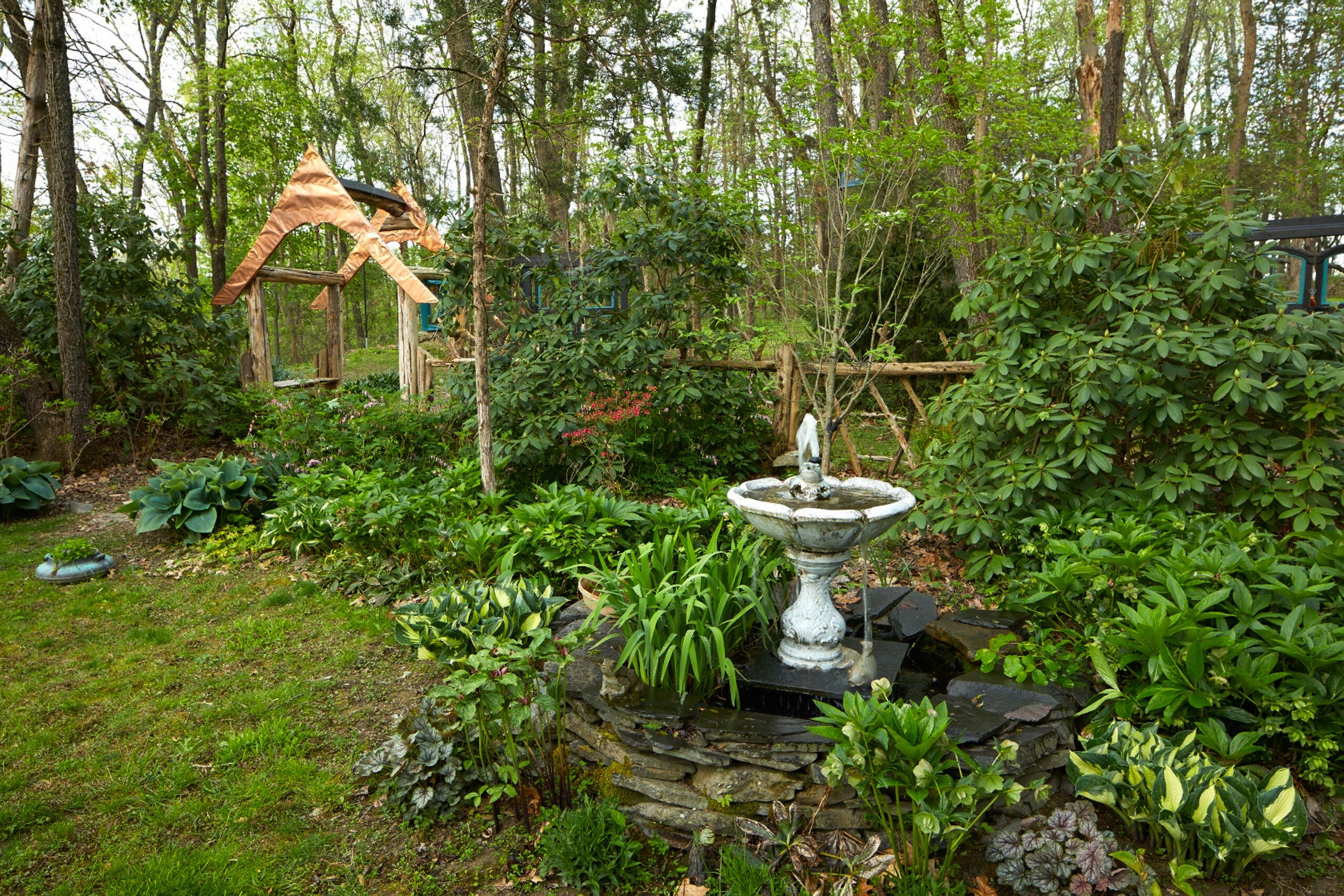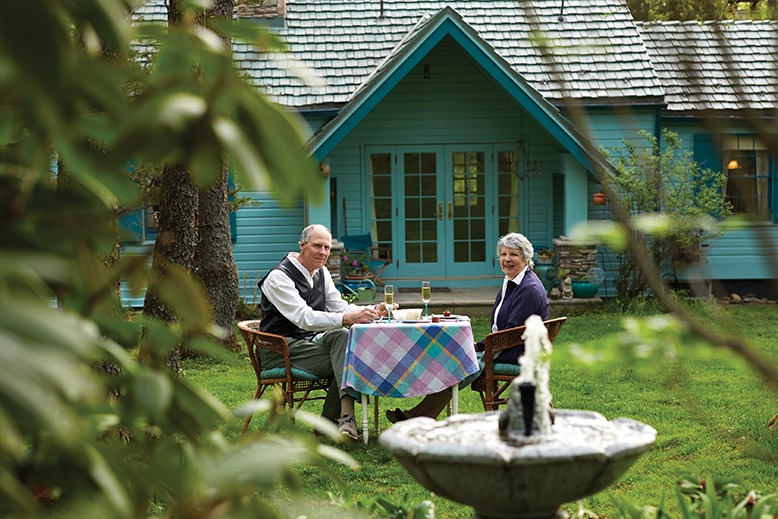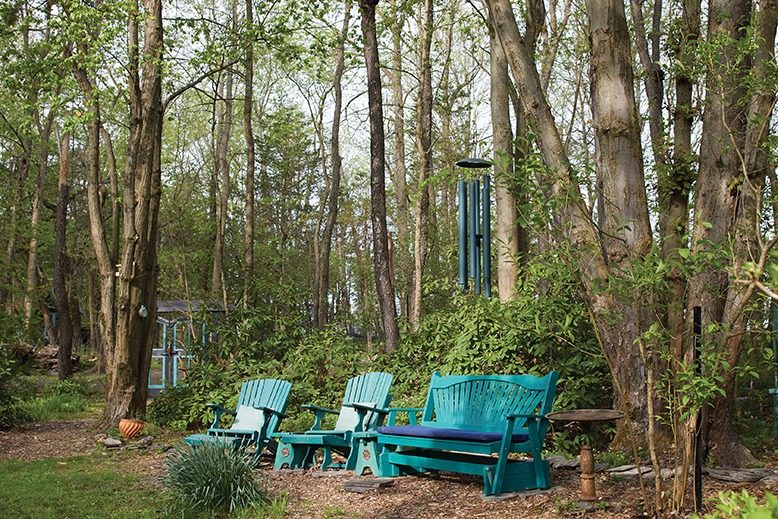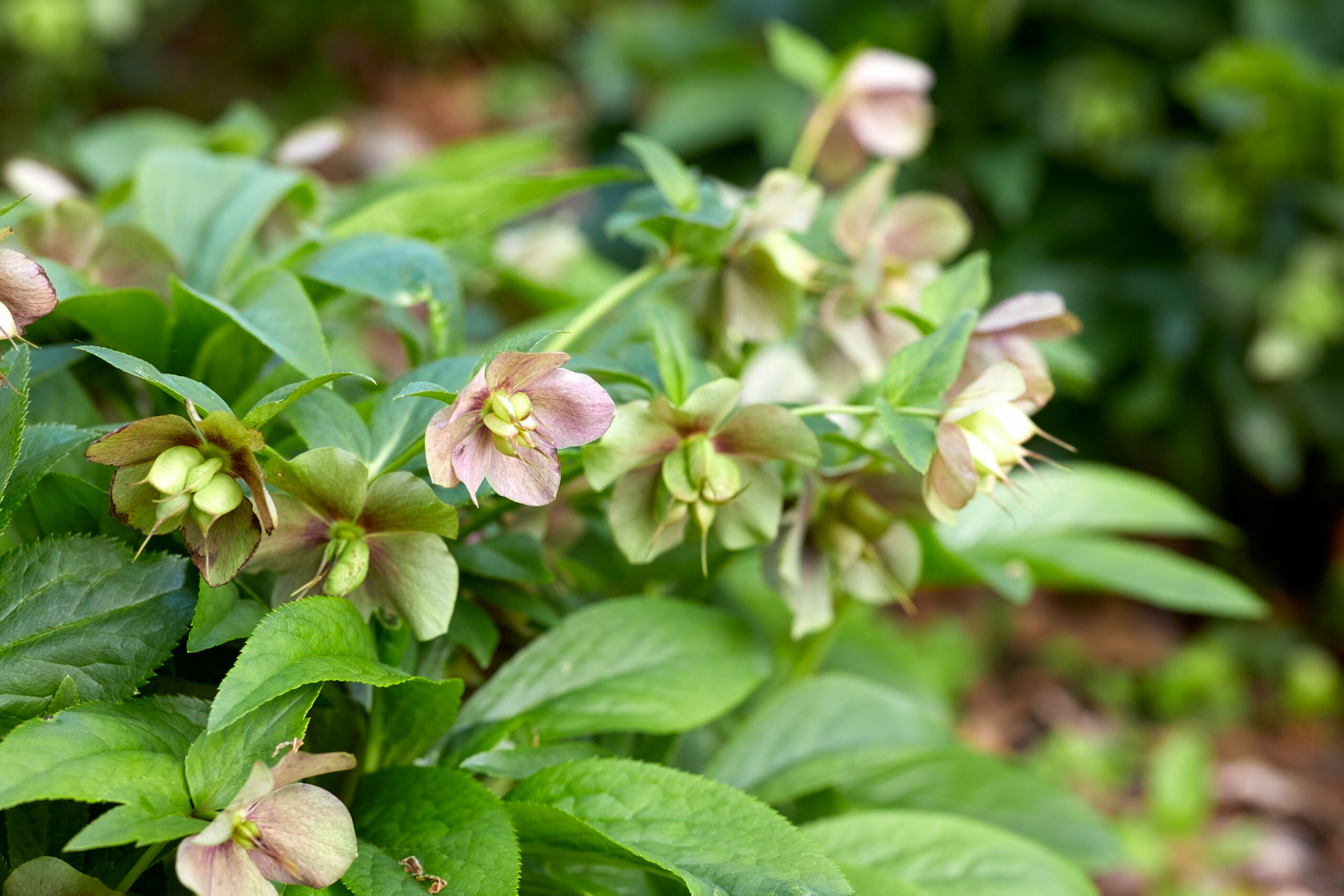
The charming gardens of the de Vries/Freed home. Photo by Laura Moss
Lois de Vries gardens 12 months of the year. Even in winter, she is planning and plotting for spring. But de Vries is not just any gardener. As founding executive director of the Sustainable Gardening Institute, she is a passionate advocate for sustainability practices and environmental protection.
On her four acres in Sussex County, in the far northwestern corner of the state, de Vries and her husband, Dan Freed, have created a natural landscape that goes way beyond your typical flower beds. Instead, it’s a mix of hardscapes and structures, including arbors and trellises, all built by Freed.
“I do all the gardening, and he does everything else,” jokes de Vries. Her favorite spot: the charming garden house. “We originally built it to have a space to escape from telephones and computers. It’s the perfect place to sit and meditate and refresh the spirit,” she says. “We’re out there just about every day.”

“It’s hard to find a place with a better atmosphere,” says de Vries of her yard. Here, dining out means enjoying the sounds of tree frogs, song birds and wind chimes. Photo by Laura Moss
Even off-season, the yard is a work in progress. “We just put in a zillion bulbs around the bird bath,” says de Vries. Whatever the season, sustainability is uppermost in her mind.
Just what is sustainable gardening? De Vries explains it with a question: What would your garden look like if you came back from a two-month vacation in high summer? If it would be a disaster, then your garden is not very sustainable. If, however, it would look pretty much the same as when you left—except that it would be less tidy and everything would seem to have grown six inches—then it’s more sustainable. “Sustainable gardening practices can be incorporated into any garden style, without affecting its beauty or design,” says de Vries. “It’s really as simple as viewing our home landscapes as just one piece of a much larger ecosystem, being sensitive to the needs of other species, and being mindful of humanity’s place in the web of life.”
[RELATED: Get Into a Garden State of Mind at Willowwood Arboretum]
Naturally, de Vries is happy to share her tips for sustainable gardening, even in the dead of winter:
1. Make your own compost.
Even in winter, you can collect plant-based kitchen scraps, shredded paper, leaves and other garden waste to make your own compost. Build a pile in an out-of-the-way spot, and turn it frequently to avoid odors. Adding your own compost to your garden beds, come springtime, will introduce essential nutrients to the soil, reducing the need for commercial fertilizers.
2. Mulch correctly.
Two inches of wood or bark chips should do it, says de Vries. Effective mulching reduces weeds in the summer while keeping plant roots cool, and it’s extremely beneficial to keeping roots warm in the winter.

Morning sun warms the seating area throughout the year, says de Vries. Mature trees provide shade, while a living fence of native catawba rhododendron provides shelter from prevailing winds. Photo by Laura Moss
3. Install a gravel edge along your driveway.
This slows the flow of water—be it rain, sleet or melting snow—and allows moisture to percolate into the ground.
4. Leave the leaves.
Resist the urge to rake up leaves; instead, use a mulching mower or rake them directly into flower and shrub beds. Rotting leaves provide natural food for your garden while also providing shelter for caterpillars, spiders, toads and other beneficial garden residents.
5. Avoid salt.
In the snow- and ice-prone regions of the state, opt for pet- and plant-friendly alternatives on driveways, and always use the minimum amount necessary. If your property abuts local streets and highways where snow removal and salt spreading are common, use salt-tolerant plants. A list can be found in the Sustainable Gardening library.

A planting of midwinter hellebores. They add a pop of color when not much else is blooming, de Vries says. Photo by Laura Moss
Other practices should be adhered to year-round. Pesticides, says de Vries, should be avoided whenever possible. You can learn to live with minor insect damage, she says. It’s just plain healthier.
Another suggestion: Downsize your lawn. To that end, you can consider planting low- or no-mow grasses, or low-growing ground covers such as native Allegheny spurge, around the lawn edge. “Grass is very labor-intensive,” warns de Vries. “To keep it the way we want it to look—this velvet expanse of lawn—requires a lot of chemicals.”
Finally, says de Vries, we should promote wildlife habitat and species diversity by planting trees, shrubs and perennials that provide food or shelter for insects, birds and other wildlife. Conversely, we should avoid planting invasive species.
The Sustainable Gardening Institute was founded in 2015 as a resource for science-based information on sustainable gardening and farming. The institute’s extensive online library brings together the knowledge of experts from public gardens, universities and government agencies. It continues to grow. Currently, there are more than 20 collaborating organizations. “Our goal is to educate others to use flowers and food in the landscape in a way that respects the genius of each place,” says institute founder Lois de Vries. “We’re trying to guide the world’s gardeners.” Visit sustainablegardeninginstitute.org to access the library or to make a donation.
